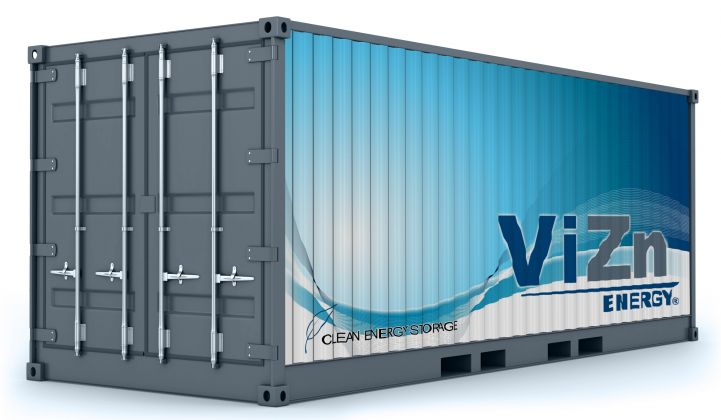Zinc redox flow battery maker ViZn Energy Systems is scrambling to find backers after the lead investor pulled out of its latest funding round.
Stephen Bonner, ViZn’s chairman, interim CEO and president, told GTM the company was in serious conversations with five potential suitors after the loss of an unnamed investor created dire cash problems for the energy storage developer.
Montana-based ViZn is also pursuing early-stage negotiations with another seven or eight investors, Bonner said, and is seeing “very strong international interest.”
The companies are all different from investors previously lined up to take part in ViZn’s financing round, he said. ViZn is understood to need million-dollar-plus levels of investment and is looking for a new name to act as lead investor.
Although ViZn has not filed for Chapter 11 insolvency protection, the company has sacked all but two of its 70-person team. Local paper Flathead Beacon last Friday reported staff were told to stop working on March 16.
“In order to qualify employees for unemployment benefits, they had to be officially laid off,” it said.
Customers, meanwhile, have been asked to give ViZn time to get the funds it needs, said Bonner. “The company had been seeking the next round of funding and came through the fall with, they thought, a firm commitment to inject significant equity investment,” he explained.
After continued delay, it became clear the backer was not going to close the investment, he said. “That put us in a hole because we had been ramping up and preparing to move to market.”
ViZn, which was founded in 2009 as Zinc Air, was hoping to boost production this year in order to satisfy a nine-figure sales pipeline, Bonner said.
In recent months, the company had announced the sale of a 400-kilowatt, 3-hour battery system to Cockerill Maintenance & Ingénierie in Belgium.
Last July, the company claimed it could undercut a record-low solar-plus-storage power-purchase agreement from Tucson Electric Power by 11 percent.*
Earlier in the year, ViZn trumpeted a deal to deliver a 1-megawatt-hour system to the Power Grid Corporation of India and a 200-kilowatt/800-kilowatt-hour battery to the Rancho Santana resort in Nicaragua. But no other sales were publicly announced in 2017.
It's unclear why ViZn’s lead investor pulled out of the deal. Bonner said the move was not connected to a January management reshuffle that saw the resignation of Ron Van Dell, who had been president and CEO since May 2014.
Nor is the setback thought to have been triggered by ViZn’s zinc-based redox flow technology, which Bonner said had been improved over time. “We’re a disruptive technology that I think addresses some big challenges in lithium-ion,” he said.
The investor connected with ViZn initially because of “a very strong interest in the basic design and characteristics and flexibility of our technology,” he stated. “We’re disruptive, and there’s risk in that, but there’s a lot of interest in our technology.”
Following the staff layoffs, ViZn is now effectively in limbo while the search continues for new sources of funding.
Bonner admitted that “time is not working for us” since delays in bringing in backers could make it harder to rehire staff. This means the company could be willing to make substantial concessions in return for cash.
The company has a challenged balance sheet and a complex capital structure, Bonner noted. But “we’re not far away from having the funds now we need to become self-sustaining," he said.
ViZn is not the only lithium-ion challenger facing money troubles recently, though.
Last month saw the battery development consortium Imperium3 New York pick up Alevo’s North Carolina factory machinery for less than 4 percent of the original amount it had budgeted for the creation of a U.S. gigafactory.
For investors willing to risk taking on the might of the lithium-ion battery industry, it’s a buyer’s market.
*This figure has been updated to reflect a correction in the previously reported story on this topic.




